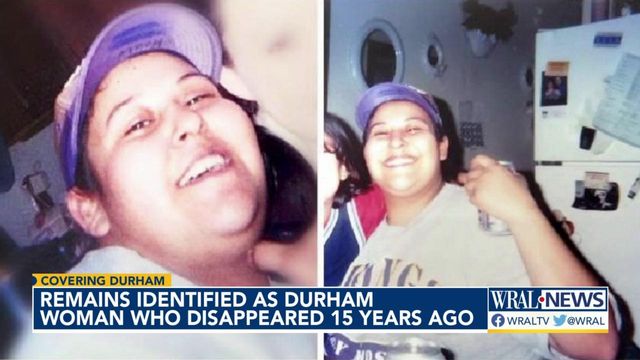Durham woman's remains found in storage unit in 2016; identified 15 years after her disappearance
Remains of missing Durham woman have been identified 15 years after her disappearance.
Posted — UpdatedThen, in 2019, FBI experts released two sketches of what they believed the woman may have looked like. They hoped the sketches would help someone come forward to identify her.
She was described as white, 25 to 35 years old and approximately 5 feet 5 inches tall.
In 2020, the Othram Lab team learned of this case and offered to assist the Durham Police Department with the use of advanced DNA testing and forensic genealogy to establish an identification – or find the nearest kin to the woman.
Last Friday, finally, experts identified the woman, according to the family's GoFundMe.
When she went missing, she was reported to be 42 years old, and had not been in contact with her family for many years, according to police. She was described as Native American, with straight black hair and brown eyes. She had a tattoo of a rose, and another tattoo that said "Missy."
Once the profile matched with Poitra, Durham PD worked with the family to get DNA swabs to confirm the identification. The identification was confirmed using KinSNP™ and also through traditional STR testing.
Michael Vogen, director of case management at Othram, pointed out how the new technology could impact cases like Missy's, saying, "A lot of police departments are just learning about this is an option or resource or another tool in in their toolbox."
Vogen said Othram has their own DNA database where people can feel comfortable uploading their commercial data from Ancestry. The information is only used to help law enforcement solve crimes like this.
"Genealogy didn’t solve this case necessarily. It was very important to create a really good DNA profile of the person we were looking for," he said.
In a case like Missy's, he said, skeletal remains may not be in good shape.
"There was a lot of degradation, contamination, other DNA bacteria that can kind of make the human DNA less upfront and hard to work with," he said.
Othram, however, has the ability to access information that other methodologies have failed to access.
He says he's hopeful this level of technology will actually lessen cold cases – and even crime.
"We don’t have to wait for cases to be cool to apply this type of technology anymore. It’s going to drive repeated crime to extinction."
Vogen believes criminals will think twice before committing a crime if they realize this level of DNA technology exists.
"That's what we're all about," he said.
Related Topics
• Credits
Copyright 2024 by Capitol Broadcasting Company. All rights reserved. This material may not be published, broadcast, rewritten or redistributed.






